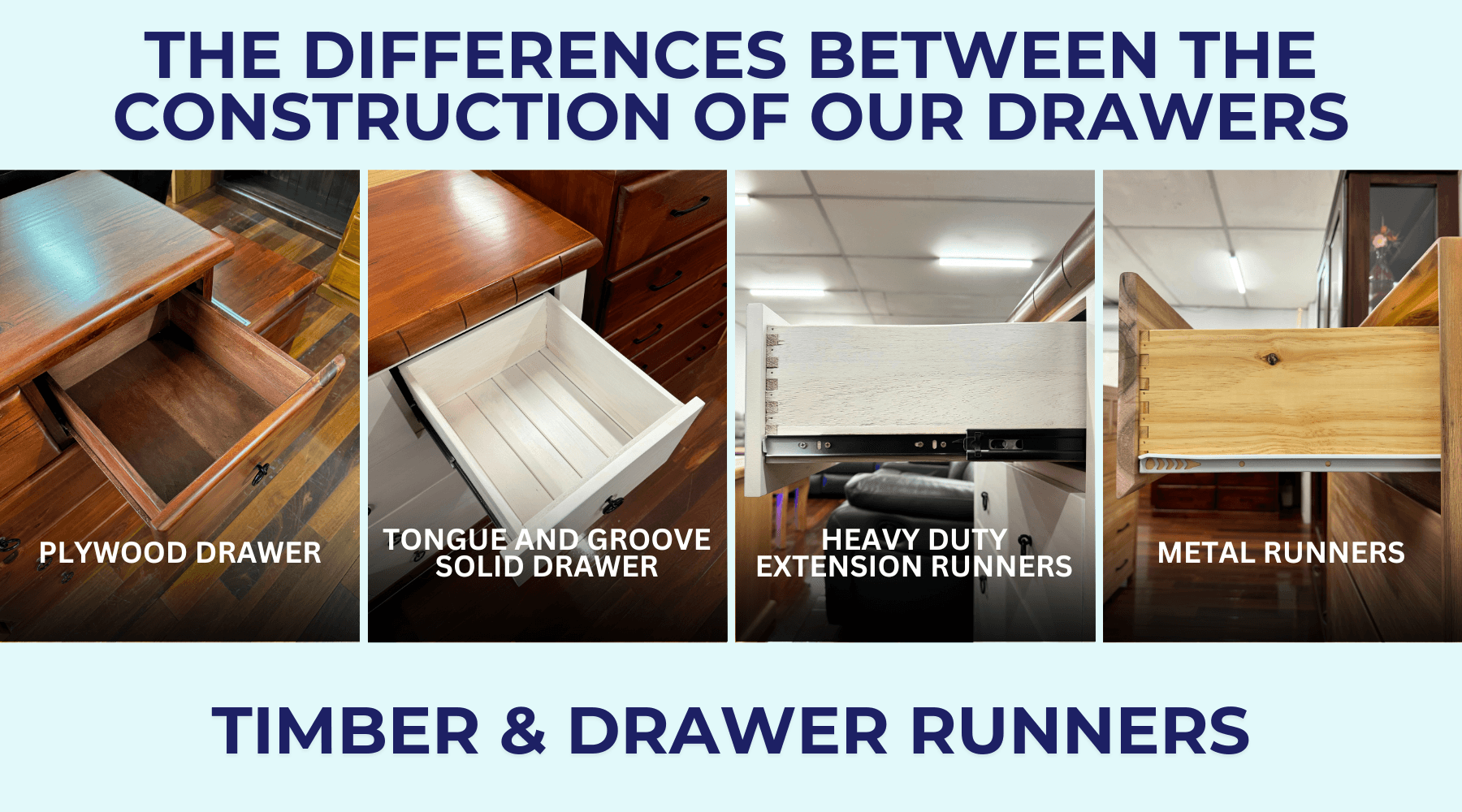
The Differences Between the Construction of Our Drawers
When it comes to choosing furniture that not only enhances your space but also stands the test of time, understanding the construction of drawers becomes essential. In this blog post, we delve into the differences between two primary materials used for our drawers: Plywood Timber and Solid Tongue and Groove Timber, and explore the choice between Metal Runners and Heavy-Duty Extension Runners.
Timber Drawers
When choosing materials for drawers, two common options are plywood and tongue and groove timber, each offering distinct advantages depending on your needs.
Plywood Timber Drawers
- Cost-Effectiveness: Plywood is a cost-effective material that provides a good structural integrity.
- Smooth Finish: Plywood has a smooth surface that gives a modern look to it.
- Durability: Plywood is renowned for its strength and durability, making it the best value for money.

Tongue and Groove Timber Drawers
- Traditional Aesthetics: Tongue and groove offers a classic, rustic look that some prefer over the uniform appearance of plywood. It can add warmth and character to furniture pieces.
- Strength and Durability: Tongue and groove timber is more solid and sturdy, making it more long lasting than plywood. However, this comes with a premium price.

So which timber drawer is right for you?
- Aesthetics: If you prioritize a traditional or rustic appearance and value the natural characteristics of wood, tongue and groove timber might be more appealing.
- Budget: Plywood tends to be more budget-friendly compared to tongue and groove timber, especially if you’re looking for a material that balances cost with performance.
Drawer Runners
When selecting runners for drawers, choosing between metal runners and heavy-duty extension runners depends largely on the intended use, load capacity requirements, and durability expectations.
Metal Runners
- Cost-Effectiveness: Metal runners are more budget-friendly compared to heavy duty options.
- Smooth Operation: These runners provide smooth extension and retraction of drawers, allowing for easy access to contents without excessive effort.
- Weight Capacity: Metal runners typically support lighter to medium-weight drawers. They are suitable for standard kitchen drawers, desk drawers, and other similar applications where the load is moderate.
- Installation Ease: Metal runners are relatively easy to install.

Heavy Duty Extension Runners
- Durability: Heavy-duty extension runners are built to withstand frequent use and heavier weights over an extended period. They are often constructed from stronger materials, providing enhanced durability and resistance to wear and tear.
- Smooth Glide Mechanism: Despite their robust construction, heavy-duty runners often incorporate mechanisms that ensure smooth and quiet operation, enhancing user experience.
- High Load Capacity: Heavy duty extension runners are designed to support significantly heavier loads compared to metal runners. They can handle drawers loaded with tools, equipment, or files without compromising on smooth operation.

So which drawer runner is right for you?
- Usage Intensity: Consider the frequency of drawer use and the weight of items that will be stored. For light to medium weight contents, metal runners are often sufficient. For heavier items or frequent use, heavy-duty extension runners are recommended.
- Budget: Evaluate your budget constraints and weigh them against the need for higher load capacity and durability. Metal runners offer a cost-effective solution for standard applications, while heavy-duty runners require a higher initial investment but provide long-term reliability.
